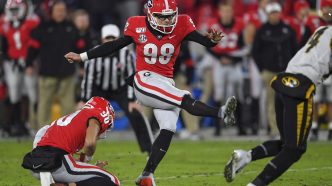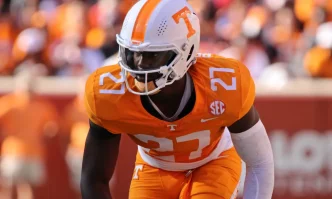The recent settlement in the House v. NCAA case heralds a significant transition for college sports, one that could directly impact the future of Georgia Football and its beloved underdog narratives.
In the realm of sports, nothing tugs at our heartstrings quite like the tale of an underdog—a player or team that surmounts daunting odds to rise through the ranks. These stories have captivated fans for ages, often exemplified in college football by walk-ons. These are the gritty athletes who initially enter campuses without the luxury of scholarships yet go on to become pivotal figures within their teams.
The Georgia Bulldogs have had their share of these inspiring journeys. Think of kicker Rodrigo Blankenship, whose transformation from walk-on to internet sensation—complete with his signature goggles—enchanted fans. Safety Dan Jackson carved out a reputation as one of Georgia’s most reliable defenders after starting as a walk-on. And then there’s quarterback Stetson Bennett, who etched his name in Bulldogs lore as the most celebrated quarterback in program history, leading Georgia to two national titles.
However, the idyllic narrative of walk-ons becoming stars is now at a crossroads. With Judge Claudia Wilken’s landmark ruling in the House v. NCAA case, college sports is poised to enter an unprecedented era. This settlement isn’t just a minor adjustment; it brings about a seismic shift in how collegiate athletics will function moving forward.
Key aspects of the settlement include a revenue-sharing model that allows players to earn money based on their in-game performances and establishes a spending cap for schools regarding roster acquisitions annually. Moreover, the ruling introduces a hard cap on roster sizes, allowing teams to maintain a maximum of 105 players. Previously, schools could have up to 85 scholarship players but were free to add as many walk-ons as they wanted.
This new framework likely signals the diminishing role of the walk-on in college football. As scholarship players gain prominence, the feel-good stories surrounding walk-ons may become even scarcer. It raises a critical question for fans: is the potential decline of the walk-on narrative an unwanted loss for the dreamers, or is it a necessary evolution aimed at preserving the integrity of college athletics as we know it?
Throughout the last decade, college football has already witnessed massive transformations, many traditional practices giving way to a new age. The changes stemming from the House v. NCAA could redefine what is possible for athletes pursuing their dreams in this fiercely competitive milieu.
As college football enters this transformative period, only time will reveal how these shifts affect the spirit of the game and the tales of those who aspire to make their mark, whether through scholarship or sheer determination.







